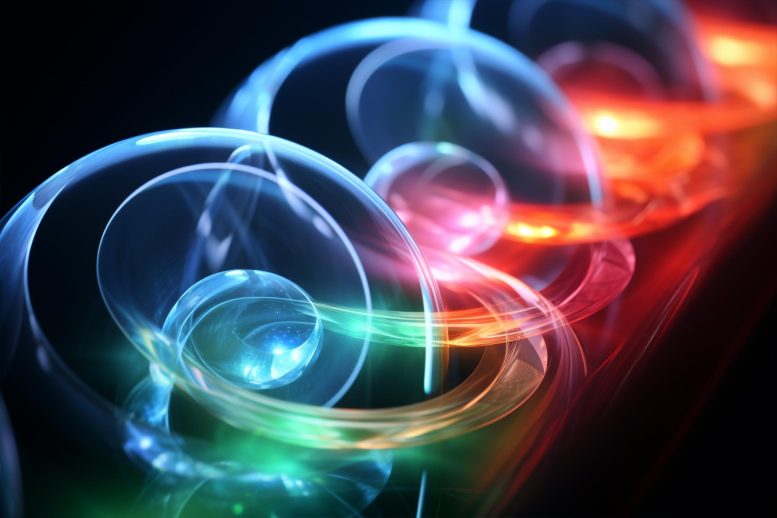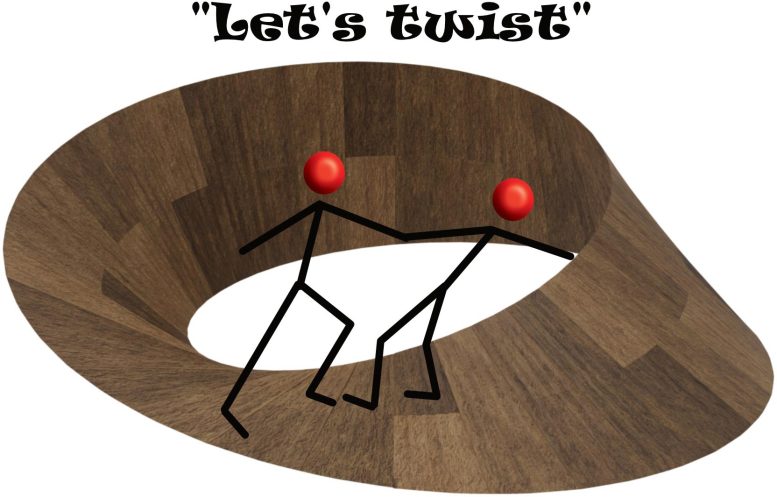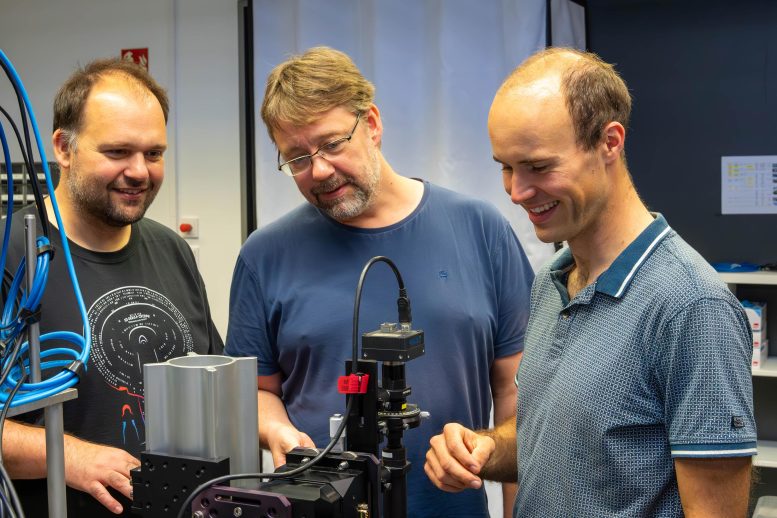
Using a mathematical concept, researchers are improving the way light particles interact in special circuits, which could make quantum technology systems more reliable and open up new opportunities for innovation. Credit: SciTechDaily.com
A research team is studying how light moves through special circuits called optical waveguides, using a concept called topology. They have made an important discovery that combines stable light paths with the interactions of light particles, which could make quantum computers more reliable and lead to new technological advances.
Scientific innovation often arises as a synthesis from seemingly unrelated concepts. For example, the reciprocity of electricity and magnetism paved the way for Maxwell’s theory of light, which is still being constantly refined and expanded with ideas from quantum mechanics.
Similarly, the research group of Professor Alexander Szameit at the Institute of Physics at the University of Rostock explores the evolution of light in optical wave circuits in the presence of topology. This abstract mathematical concept was originally developed to classify solid geometries according to their global properties.
Szameit explains: “In topological systems, light only follows the global characteristics of the wave system. Local wave perturbations such as defects, vacancies, and disorder cannot deviate its path.”
Advances in photonic interference and quantum technologies
In 1987, physicists Hong, Ou and Mandel observed the behavior of the photo pairs in a beam splitter in an experiment that until recently had been topology-independent. They discovered that a photon, which interferes on its own due to its behavior as an electromagnetic wave, is also able to form interference patterns along with other light particles. In addition to entanglement as another fundamental feature of quantum light particles, this groundbreaking discovery has proven to be an instrumental ingredient for new optical quantum technologies, including quantum computers.

Two photons (like stick figures) bounce on a Möbius strip. Their joint movement along this twisted dance track is the result of quantum interference. Classically, each of the two photons would go its own way in a plane field. Credit: University of Rostock, Institute of Physics
Quantum innovation through topological shielding
In a joint effort with colleagues from Albert-Ludwigs-Universität Freiburg, the researchers have succeeded in combining topologically robust light propagation with the interference of photon pairs.
“This result is truly a milestone,” says Szameit, who has been looking for such a connection for a long time.
Max Ehrhardt, PhD candidate and first author of the paper, continues: “Quantum technologies struggle with ever-increasing complexity. Therefore, topological protection of optical elements is a much-needed design tool to ensure proper operation despite the limited manufacturing tolerances of optical elements.

(From left to right) Matthias Heinrich, Alexander Szameit and Max Ehrhardt – authors of the scientific paper – experimenting with photonic circuits. Credit: University of Rostock
Physicists attribute the observed special behavior to the quantum nature of light: “Pairs of photons looking at each other perceive the wave structure as twisted. This makes them bond, as if dancing across the twisted dance floor as a couple. Photons passing separately through the waveguide experience only a conventional flat surface. So we have a topological change,” Ehrhardt continues to explain the mechanism.
The group’s senior scientist, Dr. Matthias Heinrich, summarizing these fascinating measurements, said: “We were amazed at how far we could deform our wave system without any impact on quantum interference.”
Future directions in topological quantum systems
Szameit already thinks about further perspectives to be investigated by his team: “Our waveguide systems offer a rich set of possibilities for building topological systems for light. Symbiosis with quantum light is just the beginning.”
Reference: “Hong-Ou-Mandel topological interference” by Max Ehrhardt, Christoph Dittel, Matthias Heinrich and Alexander Szameit, 20 Jun 2024, science.
DOI: 10.1126/science.ado8192
This research was funded by the German Research Foundation, the European Union and the Krupp von Bohlen and Halbach Foundation.
#Twisting #light #unlocks #quantum #realms
Image Source : scitechdaily.com